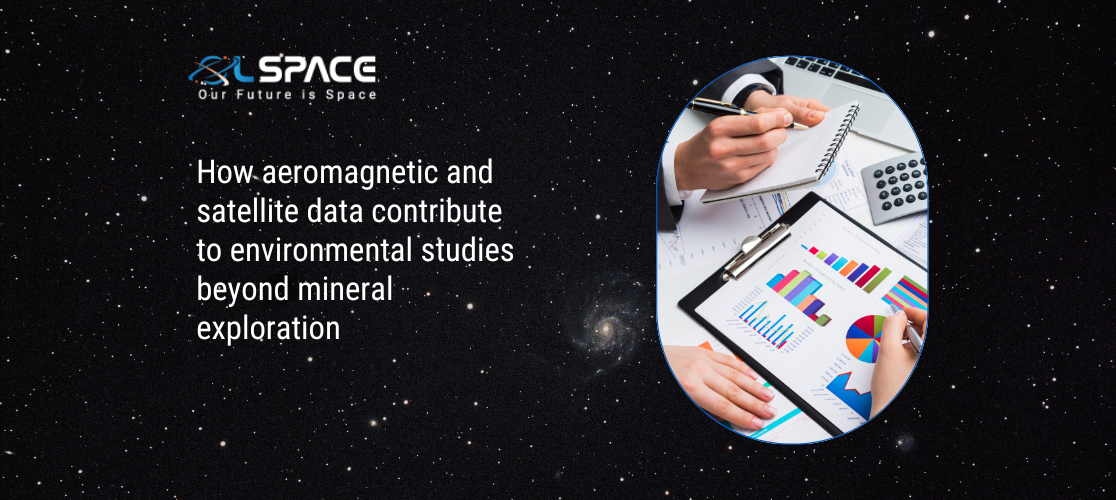05 December 2023
How aeromagnetic and satellite data contribute to environmental studies beyond mineral exploration

Aeromagnetic and satellite data play crucial roles in environmental studies beyond mineral exploration. These geophysical and remote sensing techniques provide valuable information about the Earth’s surface and subsurface, enabling scientists and researchers to assess various environmental aspects. Here are several ways in which aeromagnetic and satellite data contribute to broader environmental studies:
1. Geological Mapping and Structure Analysis:
Aeromagnetic Data: Aeromagnetic surveys help map the geological structure of the Earth’s crust. They provide insights into subsurface rock formations, fault lines, and structural features.
Satellite Data: Satellite imagery assists in high-resolution geological mapping, allowing researchers to identify surface features, geological formations, and variations in topography.
2. Environmental Monitoring and Change Detection:
Satellite Data: Continuous satellite monitoring facilitates the detection of environmental changes over time. This includes land cover changes, deforestation, urban expansion, and alterations in water bodies.
Aeromagnetic Data: Changes in the magnetic properties of the Earth’s crust may indicate subsurface alterations, such as the movement of fluids or changes in rock composition, offering additional insights into environmental shifts.
3. Natural Hazard Assessment:
Satellite Data: Satellite observations aid in monitoring and assessing natural hazards, including earthquakes, landslides, and volcanic activity. The data help identify potential risk areas and support early warning systems.
Aeromagnetic Data: Changes in magnetic anomalies may indicate subsurface geological structures associated with seismic activity, contributing to seismic hazard assessments.
4. Hydrological Studies and Water Resource Management:
Satellite Data: Remote sensing is crucial for monitoring water bodies, tracking changes in water levels, and assessing water quality. It supports studies on river discharge, lake dynamics, and coastal zone management.
Aeromagnetic Data: Aeromagnetic surveys can contribute to hydrological studies by identifying subsurface geological structures that influence groundwater flow and aquifer characteristics.
5. Soil and Vegetation Analysis:
Satellite Data: Satellite imagery provides valuable information about soil properties, vegetation health, and land cover. This data is essential for assessing soil erosion, land degradation, and the impact of agriculture on ecosystems.
Aeromagnetic Data: Variations in magnetic properties may be related to changes in soil composition or the presence of certain minerals, aiding in soil characterisation studies.
6. Climate Change Research:
Satellite Data: Remote sensing data contribute to climate change research by monitoring phenomena such as melting glaciers, changes in snow cover, and shifts in vegetation patterns.
Aeromagnetic Data: Changes in magnetic anomalies may be linked to geological processes influenced by climate change, such as alterations in groundwater flow or permafrost dynamics.
7. Ecosystem Mapping and Biodiversity Studies:
Satellite Data: Satellite imagery helps map and monitor ecosystems, assess biodiversity, and track habitat changes. It supports conservation efforts and wildlife management.
Aeromagnetic Data: Geological features identified through aeromagnetic surveys can influence the distribution and characteristics of ecosystems, providing additional context for biodiversity studies.
8. Coastal and Marine Studies:
Satellite Data: Remote sensing is vital for monitoring coastal erosion, tracking changes in sea surface temperature, and assessing the impact of human activities on marine ecosystems.
Aeromagnetic Data: Subsurface geological structures identified through aeromagnetic surveys may influence coastal and marine dynamics, providing insights into underwater geological features.
Conclusion: Comprehensive Environmental Insights Aeromagnetic and satellite data contribute synergistically to environmental studies by providing comprehensive insights into the Earth’s surface and subsurface. Integrating these data sources enhances our understanding of various environmental processes, supports sustainable resource management, and aids in mitigating the impact of natural hazards. The combination of geophysical and remote sensing techniques offers a powerful toolkit for researchers and environmental scientists striving to address the complex challenges facing our planet.
